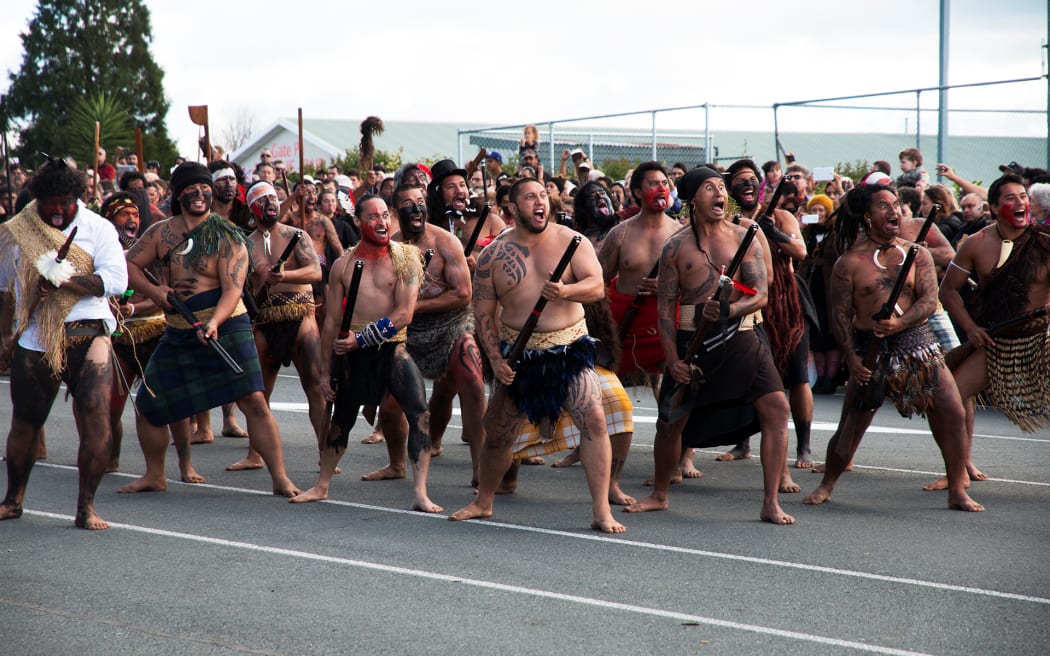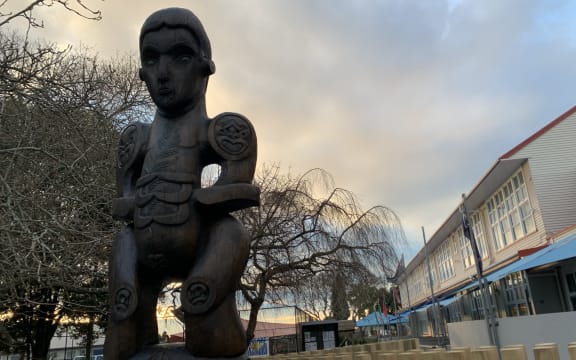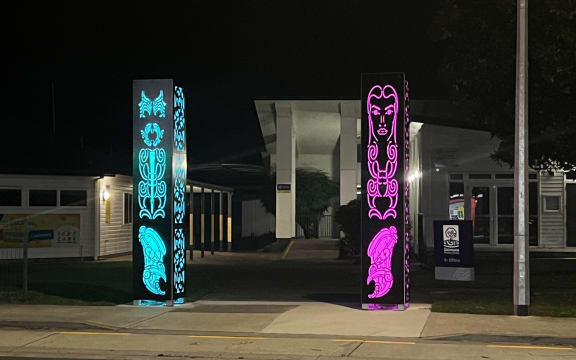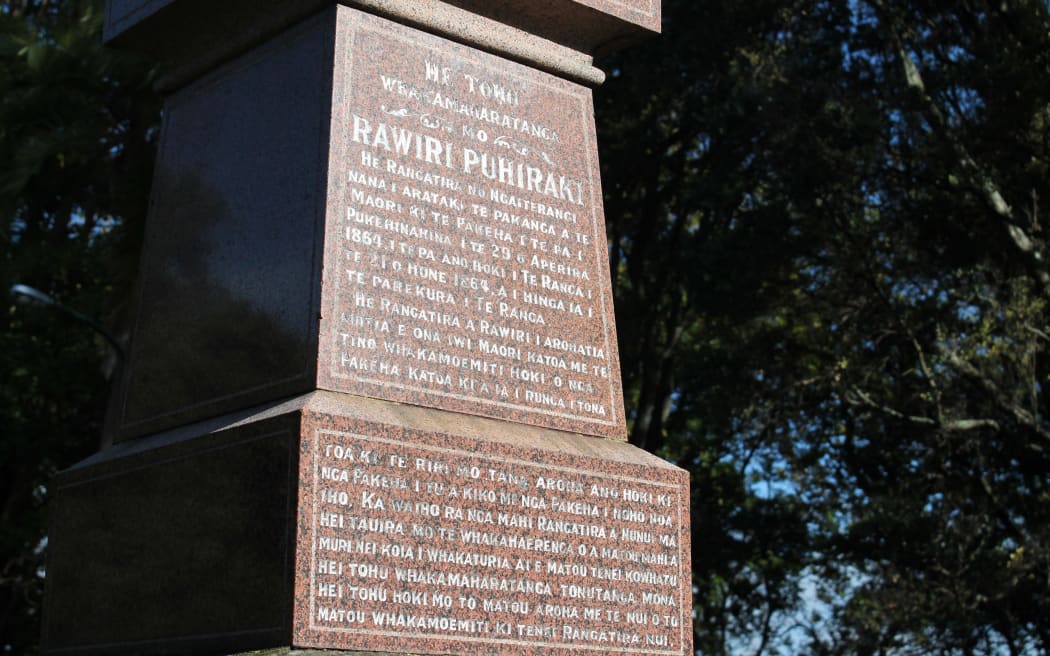Analysis: When I moved back to my hometown in Tauranga in 1998 to work in Māori radio, it was then that I heard about my eponymous tupuna, Paraone Koikoi.
My middle name is Riripeti, which is also the name of Paraone’s Koikoi’s daughter-in-law. So, sharing her name does spark a conversation about whakapapa in my whānau.
Every so often I would bump into uncles and aunties who I hadn’t seen for a lengthy period, I remember they’d ask me in not-so-subtle way…
‘Which one are you?’
My go-to response was usually, “I’m Elizabeth and Turiri’s kid’
Then they’d look at my face, ponder my answer and with glee and a big hug they would respond with….
‘Ah yes, you’re one of Maora’s”
I’d think two things…who is Maora? And, whoever she is, she must be way before my time.
Over the years since the 90s, I’ve delved into my whakapapa with a new understanding of my ancestors with questions like…what are my connections to this cousin or that uncle? Or, what is the connection to this whenua?
Then, last year the NZ Wars TV production team from Aotearoa Media Collective was set to film in Tauranga, to make the latest chapter in the series.
My next assignment as part of the podcast team was to produce the podcast version. Whereas video requires working with pictures and pace, podcasts make time for tangents, deeper background and a personal touch.

The haka taua at the 150th Commemorations of the Battle of Gate Pa, 2014. Photo: Pukehinahina Charitable Trust
So, my whakapapa and connection to one of the hapu who were literally in the trenches during the 1864 Tauranga Campaign became a good springboard to telling this story, as we had done in earlier chapters of the series. And it begins with Paraone Koikoi.
Paraone’s eldest daughter Maora and her husband Te Rahipere are where many of the families in my hapū of Ngai Tamarāwaho stem from; my whānau is from the Ngatoko Rahipere line.
Paraone Koikoi was there at Gate Pa, defending the land, though it’s unclear whether or not he fought. His son Ihakara was a ‘Christian Tohunga’ who was killed in the battle, mid-sentence while delivering a sermon.
Paraone’s wife Matatu and his daughter Te Auetu are said to have helped the wounded on both sides in the days after the battle of Pukehinahina/Gate Pa.
I read in Waitangi tribunal evidence, that Paraone surrendered his guns and pouches to the colonial office in July 1864, only to be back in his kainga in Taumata three years later fighting for his land by pulling up survey pegs.
Paraone Koikoi died in 1874. He would have been about 57 years old.
I can’t imagine how difficult his life would have been.
But to add context, after 1864, due the powers of the colonial office, my hapū Ngai Tamarāwaho lost all their whenua, and were forced to live on lands at a place called Huria, a swampy part of Tauranga.
The land was infertile and soon these avid gardeners who had huge mara kai at Taumata, couldn’t grow kai.
It was sad to read these accounts in raupatu evidence presented to the Waitangi Tribunal.
As it always is with history, there’s much more to read and discover than we can tell in the podcast.
The story of the Bush Campaign in 1867, or Te Weranga as my whanau call it, is another story I would like to tell in some shape or form.

The carved pou of Paraone Koikoi at Gate Pa Primary School Photo: Justine Murray

The two modern pou at the entranceway of Otumoetai Primary school, dedicated to Paraone Koikoi (left) and his wife Matatu. Paraone Koikoi lead the people of Ngai Tamarāwaho at the Battle of Gate Pa. Photo: Justine Murray
Today, Paraone Koikoi is memorialised in various carved pou, the entranceway at Gate Pa Primary school, the two sculptures at Otumoetai Primary school, Paraone Koikoi Drive in Tauriko and the carving inside the wharenui Tamateapokaiwhenua at Huria marae.
My great-great-great grandad is not forgotten. I have asked my whanau if they have seen a photo or a sketch of Paraone Koikoi, but no one has.
I’d encourage anyone to look at old journals or raupatu evidence in their local library, or if you are stretched for time, the NZ Wars Series offers a fascinating window into that period of tension between Māori and the British.
As Tauranga Moana commemorates 160 years since the Battle of Pukehinahina and Te Ranga, I hope this podcast encourages others to research the stories pertinent to their own hapū and whakapapa.

The memorial stone of Rawiri Puhirake at Mission Cemetery. Photo: Justine Murray
Follow NZ Wars: Stories of Tauranga Moana on Apple Podcasts, Spotify, iHeart or wherever you get your podcasts.


